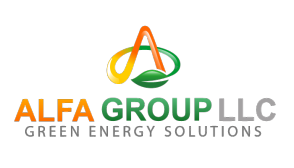Frequently Asked Questions
Frequently Asked Questions
What volumes of waste can ALFA systems process?
Our plasma FILL plants are deployed in several standard configurations ranging in capacity from 250 to 1000 tons of waste per day per plant.
What are the by-products of the system?
The two principal by-products of the plasma FILL reactors are synthetic gas called syngas and electricity. Other by-products include glass slag and recycled metal, without the production of an ash-like substance called fly ash. None of these by-products are toxic or leachable.
Other by-products include:
glass slag and metal pits, free of pollutants and sellable as construction aggregates.
Do your systems create any kind of emissions?
Our gasification plants dramatically reduce the dangerous emissions associated with traditional landfills. Our reactors are closed systems with two phases of combustion: the plasma-ark and electrical generation stages. Each phase of combustion eliminates overlapping sets of toxins. Both phases of combustion occur at temperatures too high to permit bonding of toxins associated with traditional gasification. In combination, all toxic by-products are eliminated. Minor emissions come from the electrical generators, which have a dramatically lower impact than conventional diesel generators. The synthetic gas produced is a much cleaner-burning fuel than normal diesel, resulting in cleaner emissions.
Does the reactor require a large amount of power for waste processing?
Yes, it does. Fortunately, the system produces its own power. The synthetic gas produced will power a large diesel generator. The plasma reactor uses, on average, about 15% of the power produced from the diesel generator. The excess energy produced can be supplied back to the grid.
How are hazardous materials destroyed?
The intense radiant energy and super-high temperatures created by the plasma reactor cause the actual molecules that make up hazardous waste to break apart through a process called “molecular dissociation.” At a molecular level, the waste separates into its base components, then recombines to form a safe synthetic gas during the cooling process. No hazardous agents that go into the plasma reactor will survive.
What types of waste can the plasma FILL reactors process?
The ALFA plants can accommodate all types of waste, including Municipal Waste, Green Waste, Construction & Demolition Debris, Medical Waste, Bio-hazardous Waste, Tires, and some forms of toxic waste. These systems can handle the waste pre-sorted or unsorted, depending on the destination of the by-products.
How much pre-preparation is necessary before processing?
None. The reactor processes all materials without any type of sorting. It may be desirable to reduce the size and volume of waste materials through the use of a shredder. This will help achieve optimal processing efficiency. We mix a small amount of consumables with the waste stream to provide a more consistent energy stream. The benefit of our approach is a complete elimination of the need for extensive pre-processing.
How effectively does the ALFA process medical waste and other hazardous wastes?
Our systems can process all bio-hazardous and medical waste safely and efficiently. Temperatures in the plasma reactor can achieve 1300°C at the core of the plasma field. All wastes fed into plasma FILL reactors are irreversibly destroyed and converted through the process of molecular dissociation. The by-product is a safe synthesis fuel called syngas.
Isn't gasification just another form of incineration?
No. The plasma reactors are part of a thermal process that takes place in an oxygen-starved environment. Less oxygen is present in the reactor core, which stops the waste from burning. By applying intense heat to waste material without the presence of oxygen, the waste is broken apart into its simplest molecular structure. This process is far superior to incineration because hazardous emissions are effectively eliminated.
How do you eliminate dioxin emissions?
The primary means of eliminating dioxin emissions are multiple high-temperature zones and an alkaline pH balance in a closed system. We monitor the pH balance within the reactor, adding lime when necessary to maintain a highly-alkaline environment. Dioxins cannot exist at the temperatures at which our reactors operate: 1,300˚C in the first and 800˚ in the second phase. There is a closed system in our reactors in which syngas, once cleansed at 1,300˚C a minimum of 10 times, is super-cooled to less than 200˚ instantaneously before it is channeled to a second heating area of 800˚C for the creation of electricity. There is no opportunity for a trace dioxin to escape within the closed system. It is not possible for dioxin to escape the second heating phase. Further, the issue of dioxins is well-known in gasification science. Ours is innovative and the most effective, but only one of a variety of solutions by the leading ark-plasma scientists.
I've heard about the ALFA Energy System
<< New text box >>


